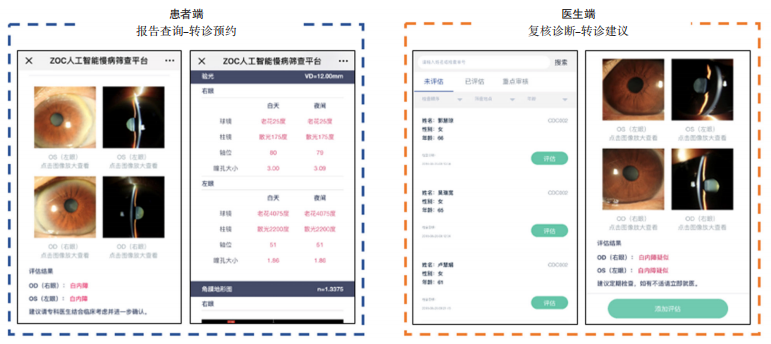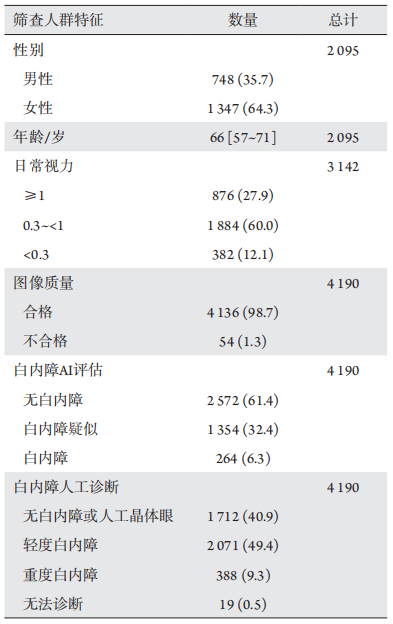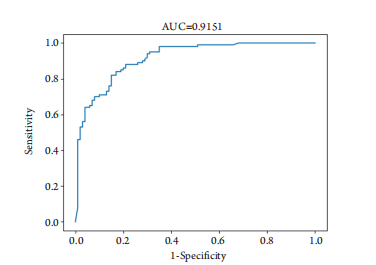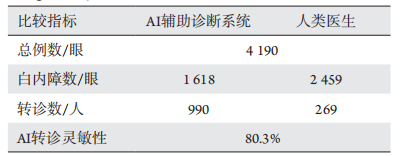1、Epidemiology of cataract[ J]. Lancet, 1982, 1(8286): 1392-1393.Epidemiology of cataract[ J]. Lancet, 1982, 1(8286): 1392-1393.
2、Tang Y, Wang X, Wang J, et al. Prevalence of age-related cataract
and cataract surgery in a Chinese adult population: the Taizhou eye
study[ J]. Invest Ophthalmol Vis Sci, 2016, 57(3): 1193-1200.Tang Y, Wang X, Wang J, et al. Prevalence of age-related cataract
and cataract surgery in a Chinese adult population: the Taizhou eye
study[ J]. Invest Ophthalmol Vis Sci, 2016, 57(3): 1193-1200.
3、Mohammad-Rabie H, Malekifar P, Esfandiari H. Visual outcomes
after primary iris claw artisan intraocular lens implantation during
complicated cataract surgery[ J]. Semin Ophthalmol, 2017, 32(3):
337-340.Mohammad-Rabie H, Malekifar P, Esfandiari H. Visual outcomes
after primary iris claw artisan intraocular lens implantation during
complicated cataract surgery[ J]. Semin Ophthalmol, 2017, 32(3):
337-340.
4、SharaA K, Aslami A N, Srivastava J P, et al. Visual outcome of traumatic
cataract at a tertiary eye care centre in north India: a prospective
study[ J]. J Clin Diagn Res, 2016, 10(1): Nc05-Nc08.SharaA K, Aslami A N, Srivastava J P, et al. Visual outcome of traumatic
cataract at a tertiary eye care centre in north India: a prospective
study[ J]. J Clin Diagn Res, 2016, 10(1): Nc05-Nc08.
5、Wu X , Long E, Lin H, et al. Prevalence and epidemiological
characteristics of congenital cataract: a systematic review and meta-
analysis[ J]. Sci Rep, 2016, 6: 28564.Wu X , Long E, Lin H, et al. Prevalence and epidemiological
characteristics of congenital cataract: a systematic review and meta-
analysis[ J]. Sci Rep, 2016, 6: 28564.
6、Wu X, Huang Y, Liu Z, et al. Universal artificial intelligence platform
for collaborative management of cataracts[ J]. Br J Ophthalmol, 2019,
103(11): 1553-1560.Wu X, Huang Y, Liu Z, et al. Universal artificial intelligence platform
for collaborative management of cataracts[ J]. Br J Ophthalmol, 2019,
103(11): 1553-1560.
7、Long E, Lin H, Liu Z, et al. An artificial intelligence platform for the
multihospital collaborative management of congenital cataracts[ J]. Nat
Biomed Eng, 2017, 1(2): 0024.Long E, Lin H, Liu Z, et al. An artificial intelligence platform for the
multihospital collaborative management of congenital cataracts[ J]. Nat
Biomed Eng, 2017, 1(2): 0024.
8、Chylack LT Jr, Wolfe JK, Singer DM, et al. The Lens Opacities
Classification System III. The longitudinal study of cataract study
group[ J]. Arch Ophthalmol, 1993, 111(6): 831-836.Chylack LT Jr, Wolfe JK, Singer DM, et al. The Lens Opacities
Classification System III. The longitudinal study of cataract study
group[ J]. Arch Ophthalmol, 1993, 111(6): 831-836.
9、Gulshan V, Peng L, Coram M, et al. Development and validation of a
deep learning algorithm for detection of diabetic retinopathy in retinal
fundus photographs[ J]. JAMA, 2016, 316(22): 2402-2410.Gulshan V, Peng L, Coram M, et al. Development and validation of a
deep learning algorithm for detection of diabetic retinopathy in retinal
fundus photographs[ J]. JAMA, 2016, 316(22): 2402-2410.
10、Abramoff MD, Lavin PT, Birch M, et al. Pivotal trial of an autonomous
AI-based diagnostic system for detection of diabetic retinopathy in
primary care offices[ J]. NPJ Digit Med, 2018, 1: 39.Abramoff MD, Lavin PT, Birch M, et al. Pivotal trial of an autonomous
AI-based diagnostic system for detection of diabetic retinopathy in
primary care offices[ J]. NPJ Digit Med, 2018, 1: 39.
11、Lin H, Li R, Liu Z, et al. Diagnostic efficacy and therapeutic decision-
making capacity of an artificial intelligence platform for childhood
cataracts in eye clinics: a multicentre randomized controlled trial[ J].
EClinicalMedicine, 2019, 9: 52-59.Lin H, Li R, Liu Z, et al. Diagnostic efficacy and therapeutic decision-
making capacity of an artificial intelligence platform for childhood
cataracts in eye clinics: a multicentre randomized controlled trial[ J].
EClinicalMedicine, 2019, 9: 52-59.








